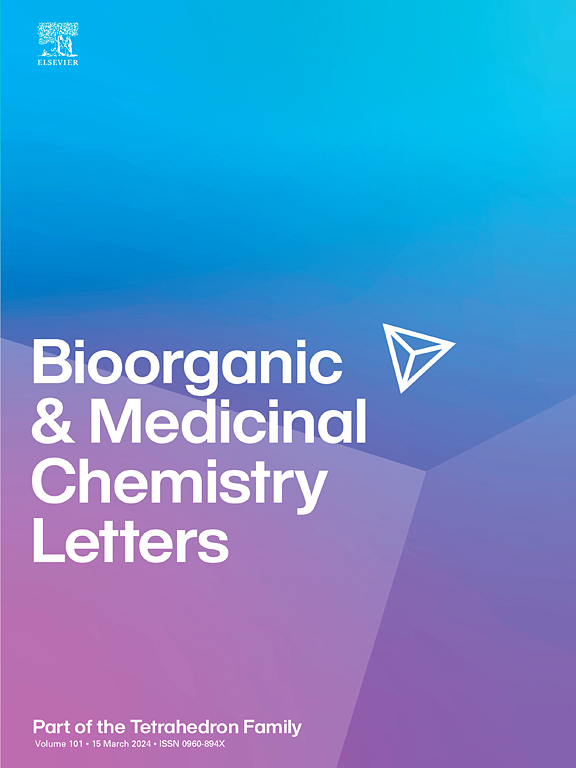Design, synthesis, and biological evaluation of 2,4-diaminopyrimidine inhibitors of hematopoietic progenitor kinase 1
IF 2.5
4区 医学
Q3 CHEMISTRY, MEDICINAL
引用次数: 0
Abstract
Cancer immunotherapy is an emerging anti-cancer strategy that enhances immune circulation by targeting the immune system. Among the various targets, HPK1, a member of the mammalian Ste20-like protein serine/threonine kinase family, serves as a crucial negative regulator of immune-mediated mechanisms, positioning it as a promising target for immunotherapy. Herein, based on the reported HPK1 inhibitors characterized by 2,4-diaminopyrimidine components, four series of derivatives were obtained through structural optimization methods. Compound 10c demonstrates significant inhibitory effects on HPK1 kinase, with an IC50 of 0.09 nM. Additionally, it markedly inhibits the phosphorylation of the downstream adaptor protein SLP76, with an IC50 of 33.74 nM, and effectively stimulates the secretion of the T cell activation marker IL-2, exhibiting an EC50 of 84.24 nM. These findings suggest that compound 10c holds considerable promise for applications in immunotherapy.

造血祖激酶1 2,4-二氨基嘧啶抑制剂的设计、合成和生物学评价
癌症免疫治疗是一种新兴的抗癌策略,通过靶向免疫系统来增强免疫循环。在这些靶点中,HPK1是哺乳动物ste20样蛋白丝氨酸/苏氨酸激酶家族的成员,是免疫介导机制的关键负调控因子,是免疫治疗的一个有希望的靶点。本文以已有报道的以2,4-二氨基嘧啶成分为特征的HPK1抑制剂为基础,通过结构优化方法获得了4个系列衍生物。化合物10c对HPK1激酶有明显的抑制作用,IC50为0.09 nM。此外,它显著抑制下游接头蛋白SLP76的磷酸化,IC50为33.74 nM,并有效刺激T细胞活化标志物IL-2的分泌,EC50为84.24 nM。这些发现表明,化合物10c在免疫治疗中具有相当大的应用前景。
本文章由计算机程序翻译,如有差异,请以英文原文为准。
求助全文
约1分钟内获得全文
求助全文
来源期刊
CiteScore
5.70
自引率
3.70%
发文量
463
审稿时长
27 days
期刊介绍:
Bioorganic & Medicinal Chemistry Letters presents preliminary experimental or theoretical research results of outstanding significance and timeliness on all aspects of science at the interface of chemistry and biology and on major advances in drug design and development. The journal publishes articles in the form of communications reporting experimental or theoretical results of special interest, and strives to provide maximum dissemination to a large, international audience.

 求助内容:
求助内容: 应助结果提醒方式:
应助结果提醒方式:


